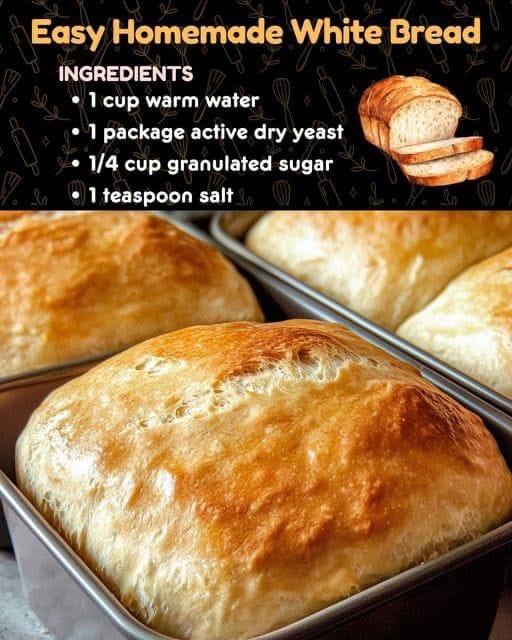ADVERTISEMENT
Instructions:
1. Mix the Dough
In a large mixing bowl, whisk together the flour, yeast, and salt. Gradually add the water, stirring with a wooden spoon until the ingredients are well combined and form a sticky dough. The dough will be shaggy and sticky, which is exactly what you want. Cover the bowl with plastic wrap or a clean kitchen towel and let it sit at room temperature for 12 to 18 hours.
2. Long Rest and Fermentation
After 12 to 18 hours, the dough will have risen, become bubbly, and increased in volume. This long fermentation period allows the dough to develop flavor and gluten without any kneading.
3. Shape the Dough
Lightly flour your work surface and your hands. Gently scrape the dough out of the bowl onto the floured surface. Fold the dough over on itself a few times to form a ball, but don’t overwork it. Let the dough rest for 15 minutes.
4. Prepare for Baking
After resting, shape the dough into a smooth round ball. Place it seam-side down on a piece of parchment paper dusted with cornmeal or flour. Cover with a towel and let it rise for another 1 to 2 hours, until it has doubled in size.
5. Preheat the Oven
About 30 minutes before the dough is ready to bake, preheat your oven to 450°F (230°C). Place a Dutch oven (or any heavy pot with a lid) inside the oven to preheat as well. The hot Dutch oven will help create the steam needed for a crispy crust.
6. Bake the Bread
Carefully remove the hot Dutch oven from the oven, and using the parchment paper, lift the dough and place it into the Dutch oven. Cover with the lid and bake for 30 minutes. Then remove the lid and bake for an additional 15-20 minutes until the crust is golden brown and crispy.
7. Cool and Serve
Once baked, carefully remove the bread from the Dutch oven and place it on a wire rack to cool. Let it cool completely before slicing to preserve the texture and prevent the bread from becoming gummy.
Tips for Perfect No-Knead Bread:
- Patience is key: The long fermentation period is essential for the bread’s flavor and texture, so don’t rush it!
- Don’t overwork the dough: Handling the dough too much after fermentation can deflate the air bubbles that give the bread its light, airy texture.
- Use a Dutch oven: This creates a steamy environment that mimics a professional bakery oven, helping to form the crusty exterior.
- Experiment with flours: You can substitute some of the all-purpose flour with whole wheat, rye, or other flours to experiment with different flavors and textures.
Variations:
- Add-ins: Incorporate ingredients like roasted garlic, herbs, olives, or cheese into the dough before the final rise for a flavored loaf.
- Seed Topping: Brush the top of the dough with water or egg wash and sprinkle with sesame, poppy, or sunflower seeds before baking for added crunch and flavor.
Serving Suggestions:
This no-knead bread is incredibly versatile and pairs beautifully with any meal. Serve it warm with a pat of butter or olive oil for dipping, alongside soups, or use it for sandwiches. It’s also perfect for toast with your favorite spreads for breakfast.
With the no-knead method, anyone can bake delicious, crusty artisan bread without breaking a sweat. The hardest part of this recipe is waiting for the dough to rise! Once you’ve mastered this easy technique, you’ll find yourself making homemade bread regularly, filling your kitchen with the delightful aroma of fresh-baked goodness.

